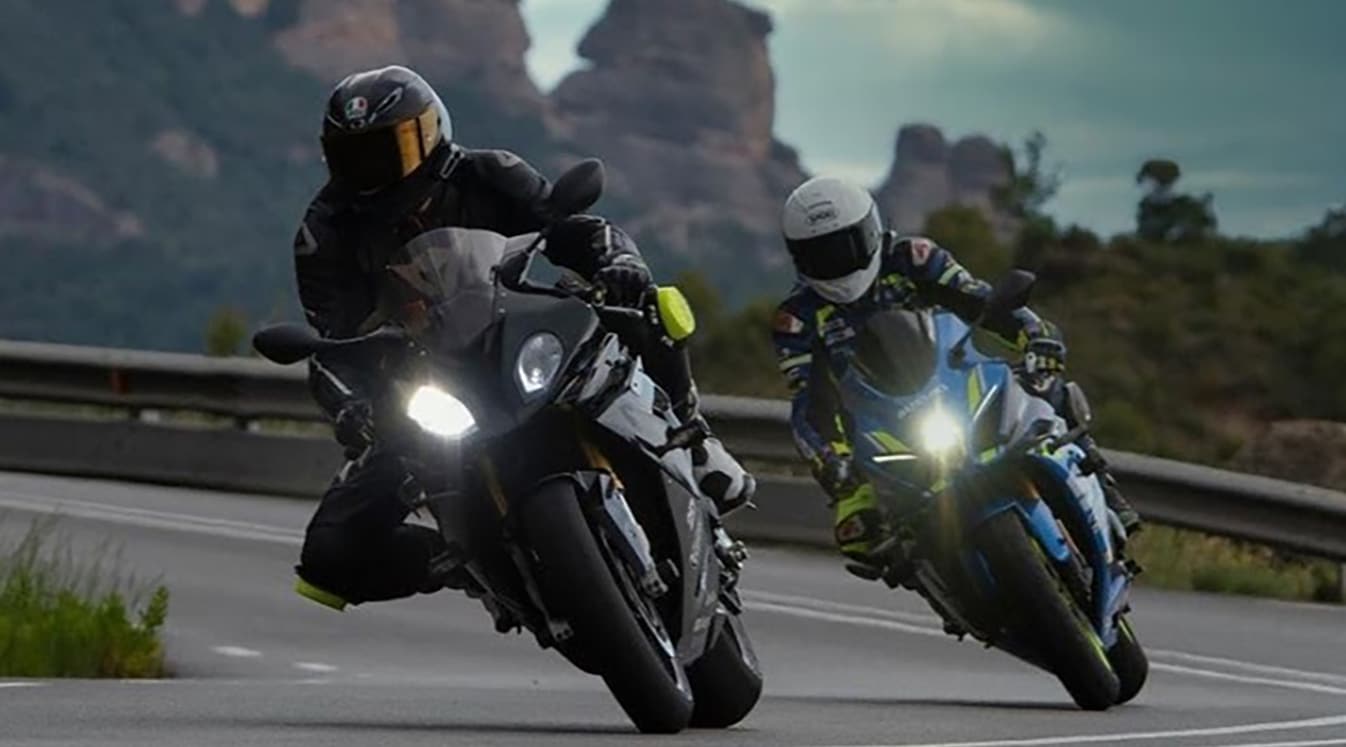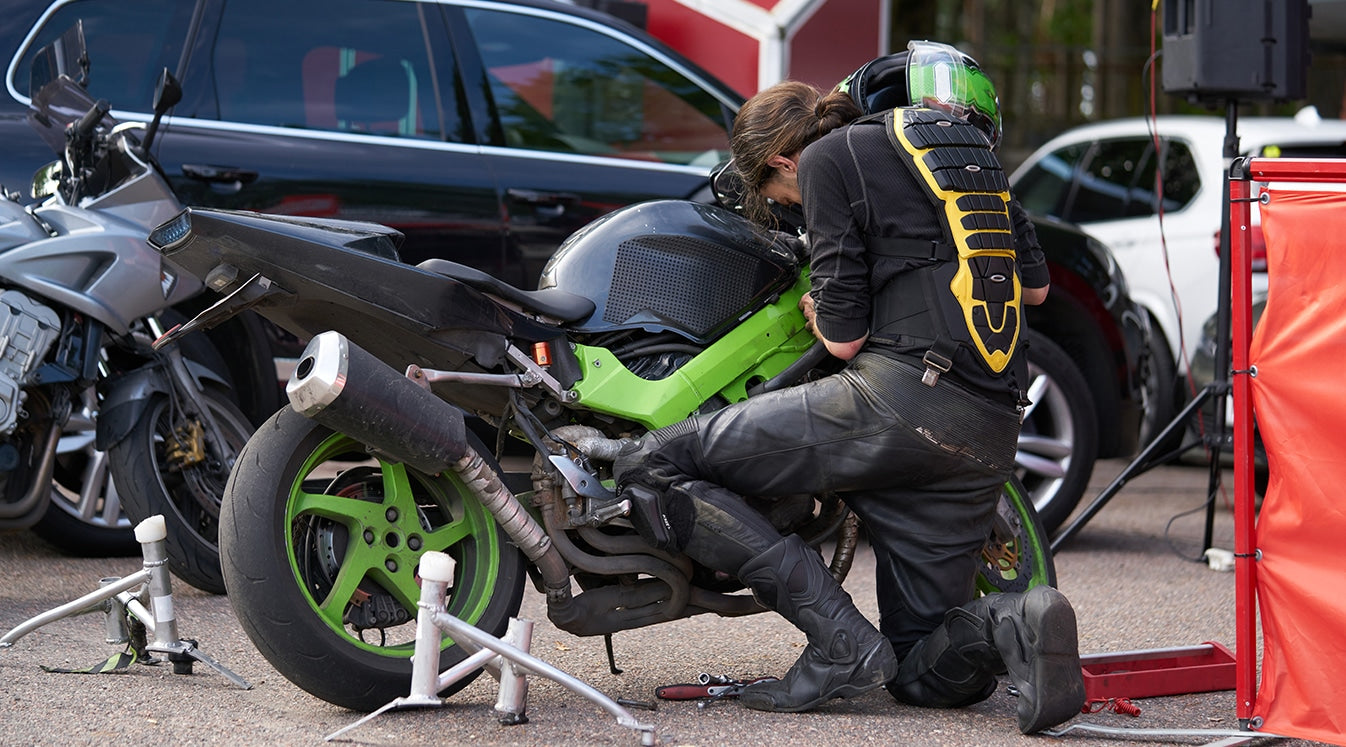You can enroll in a motorcycle training course, but you might need some additional practice on your own. Take your bike to an empty parking lot or lonely stretch of road to practice your skills. The pavement should be well-maintained so you don’t have to worry about hitting potholes or damaging your bike. You can also ask a more experienced rider to come along if you don’t feel comfortable going it alone.
Once you find the right practice area, make sure your bike is ready for the trip. Check your oil levels and use a pressure gauge to make sure the tires are fully inflated. Use the proper motorcycle riding gear to stay safe on the road. You should be wearing a full-face helmet, ideally one with full helmet communication, long sleeves, gloves and riding boots.

When you’re ready to go, add these essential riding skills to your practice list:
Staying in Your Lane
Set up two rows of cones or empty bottles/cans on the road. Practice driving in between the rows without toppling anything over. Try narrowing the lane and increasing your speed as you get better. The goal is to keep your bike as straight as possible. Don’t forget to clean up after yourself. If you bring anything to the lot, be sure to take it home with you, including trash or recyclables. Some property owners may not want you to use their dumpster.
Learn More About Motorcycle Lane Position
Braking
There are lots of ways to brake. You might have to stop in a matter of seconds, so get better at bringing your bike to a sudden halt. Practice stopping in a straight line as well as on a curve. You can set up bottles or cones to measure the stopping distance. If you topple something over, you’ll need to hit the brakes sooner.
Turning
Turning can be a challenge in some situations. Practice making wide turns while moving and from a stop. Do the same for sharp turns with 90 degrees or less. Making sharp turns without stopping is usually the hardest skill to master. You’ll need to lean to the side while moving, which can be intimidating for some riders.
Countersteering
Countersteering is a move that every rider should know. It involves turning in the opposite direction you want to move. This may seem counterintuitive, but your bike will eventually turn in the direction you want to go as you lean to the side.

Dodging Obstacles
There are bound to be all kinds of obstacles lying in the road, including dead animals, broken glass, nails and other sharp objects that could puncture your tires. Use those bottles and cones you’ve been carrying around and try driving past the object without knocking it over. Practice the same move at different speeds. If you want more of a challenge, set up an obstacle in between rows of cones or bottles so you don’t have as much room to get out of the way. This will help you prepare for real-world situations where you don’t have the option of swerving into the next lane.
Calling While Driving
You never know when you might have to make a call while riding your motorcycle. Most of us are used to being “on-call” 24/7, whether it’s for work or checking in with our loved ones. You might also have to call for help or roadside assistance if you’re having trouble with your bike.
Use Bluetooth motorcycle speakers to send and receive calls hands-free. You shouldn’t have to take your hands off the handlebars to make a call. Find a Bluetooth motorcycle headset that fits into your helmet for a safer ride. The speakers should block out the noise of your bike so you can hear what the other person is saying.
Shop Motorcycle Bluetooth Headsets
Once you master these skills, you’ll be ready for the real thing. Take your time when practicing these skills. You should feel confident in your abilities before heading out on the road.









